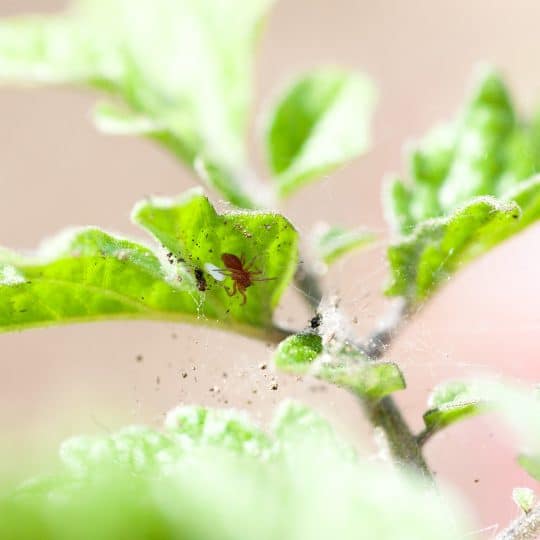Tree Mites Treatment
They May be Small, but They’re Mighty
Posted
July 26, 2018

So many mites, so little bugs. There are thousands of different mite species, and most of them measure less than one millimeter in length. How much damage can one little bug do? Keep reading to learn a little more about them and tree mites treatment.
What are Mites
Mites are part of the arachnid family, so they have eight tiny legs that can crawl all over your trees, plants, and make it into your home. Some of the most common mites are:
- Bird Mites. Attach to hosts—like people and pets—and hitch a ride around the yard and into homes. Attracted to birds and poultry.
- Chigger Mites. Attach to hosts—like people and pets—and hitch a ride around the yard and into homes. Can carry disease.
- Clover Mites. Bright red color. Attracted by fruit trees. Travel in the thousands. Can enter your home through the tiniest cracks.
- Dust mites. One of the most common allergens. Can trigger asthma attacks.
- Spider Mites. Reddish-brown color. Attracted to indoor or outdoor plants—love greenhouses. Produce web-like covering on plants. Can destroy crops.
Signs of Mites
Some mites do bite, and will produce small, itchy irritations on the skin. Other parasitic species carry disease. Since they’re so small, most of the signs can be found on plants.
Mites live in colonies on the underside of leaves. They pierce leaf tissue and suck up the plant fluids, leaving tiny dots on the leaves. The more they eat, the more the leaves turn yellow, dry up, and drop off.
Spider mites are common in hot, dry conditions. You’ll see their fine webbing on plants like strawberries, melons, beans, tomatoes, ornamental flowers, trees, and most houseplants. Spider mites can travel across large areas by riding their webs on the breeze. Therefore, careful containment and disposal of infested plants is crucial.
Tree Mites Treatment
Usually, the first method of pest control is thought to be pesticides. However, this can actually help spread the mite infestation by killing the insects that eat them. Mites also quickly develop resistance to various pesticides. This is why it’s important to find more natural methods of mite control.
- Get rid of the evidence. Prune any infested part of the plant including the leaves and stems and throw it in the trash—not the compost pile.
- Wash plants with a strong stream of water to reduce infestation.
- Buy or attract natural enemies, such as ladybugs, lacewing, and predatory mites.
- The use of organic insecticide may help without harming important insects and plants.
- Insecticidal soap or botanical insecticides can be used to spot treat heavily infested areas.
- On fruit trees, horticultural oil can be used early in the season or late in the fall to destroy any overwintering eggs.
- Make sure you’re watering properly so that mites aren’t attracted to thirsty plants.
For more information on tree mites treatment, contact Elite Tree Care to review your specific case and issues.